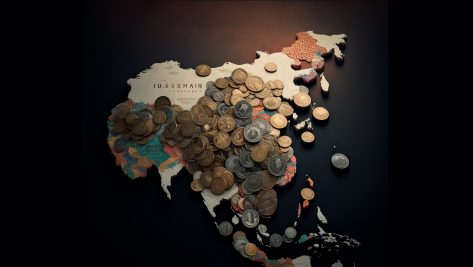Building customer loyalty is now a major objective for business organizations. That’s why there is so much excitement about the launch of the IE-Travel Club Chair in Customer Loyalty, an initiative designed to generate applied research and disseminate knowledge in the field of customer loyalty as a strategic element in sales management.
T. S.: What role does customer loyalty play in a company’s commercial strategy, and, in particular, for companies associated with Travel Club?
S. P.: The effort a company has to make to obtain customer loyalty can differ greatly depending on a number of variables, such as its market share, market growth and positioning. A company with a low market share in a growing market should reasonably focus more on attracting customers than on obtaining their loyalty. At the other end of the scale, companies that enjoy a strong position on a market undergoing low-level growth should focus much more on loyalty than on attraction.
The companies associated with Travel Club are heavily committed to customer loyalty and that is evident in their commercial strategies. Most of the companies are leaders in their sectors and stand out from competitors in terms of product quality and customer service, aspects that are highly valued by customers and very important for keeping their loyalty. Their commitment to loyalty also involves active participation in the leading loyalty program in Spain, which plays a key role in their sales strategies.
T. S.: What is the Travel Club-IE Loyalty Chair looking to provide for the business environment?
S. P.: We have promoted the Travel Club-IE Loyalty Chair so that we can share our experiences in loyalty with companies from other sectors in a more academic atmosphere. This will allow us to compare the different systems for measuring returns on investment in loyalty and keep us at the fore in innovation and the application of new technologies so that we can continue to send our associate companies customers’ proposals of value that keep them satisfied and loyal. The chair research team will focus on analyzing the effect of different actions on customer retention and loyalty. They will then develop models that quantify the effect of said actions on a company’s bottom-line results. The Chair will set a precedent in Spain in the study of profitability of loyalty and the dissemination of related findings that can be used by companies interested in this field.
T. S.: To what extent does the current crisis have a positive or negative effect on customer loyalty?
S. P.: In times of crisis, it is particularly important to make a greater effort to look after customers and keep their loyalty. According to a survey by Forrester Research, at the end of 2013 60% of the companies that took part said that loyalty was a strategic priority and 50% said that despite the crisis they had increased their loyalty budget in recent years.
In times of crisis, it is particularly important to make a greater effort to look after customers and keep their loyalty.
T. S.: How does a good loyalty program affect a company’s bottom-line results?
S. P.: The loyalty program should not be the only tool used to obtain customer loyalty, but it is the most important. The companies associated with Travel Club are leaders in their sectors and offer quality products and services as a base for customer loyalty. A good loyalty program can help learn much more about the customer and in designing offers and incentives that correspond to each customer’s requirements. Furthermore, a good loyalty program helps the company set up a lasting, profitable bond with its customers, which always leads to better financial results.
T. S.: To what extent do loyalty programs help change customer habits?
S. P.: Changing a customer’s purchasing habits is a primary objective of any loyalty program, but achieving that objective is easier said than done. To influence purchasing behavior, you need to create an impact by means of a value proposition that is both interesting and appropriate for the customer. In order to do that, you have to know the customer and be able to predict his/her response. A good loyalty program has a powerful database with millions of transactions and the intelligence required to predict behaviors according to the stimulus. When the process is performed correctly, the customer increases the frequency with which he/she purchases or the amount of the purchase. However, the equation must be profitable for both parties.
T. S.: What is intelligent loyalty?
S. P.: Intelligent loyalty is the capacity for maintaining a lasting relationship with a customer based on attractive proposals that adapt to different profiles and preferences in a profitable way. It is a question of making the right proposals that are effective in a personal way, identifying the right moment and being capable of maintaining the customer’s interest, as well strengthening the bond with him or her. Travel Club places customer intelligence at the service of this relationship to create bidirectional value.
To influence purchasing behavior, you need to create an impact by means of a value proposition that is both interesting and appropriate for the customer.
T. S.: What are the most effective strategies for said bond?
S. P.: In the past, contact with the customer was limited to the actual transaction. Today, with new technologies, it is more usual to contact the customer before, during and after the sale. The best strategy includes making the most of each contact with the customer, regardless of the channel, to create and strengthen the bond. For that, it is first of all necessary to establish multichannel communication (post, website, email, social networks, telephone, mobile app) and, secondly, send the communication along the right channel with a message that is relevant and appropriate in order to obtain a response. More and more customers prefer personalized treatment and exclusiveness and they enjoy being surprised by unexpected gestures. Not all customers are the same and the company can decide when to invest in each type of customer at any time. This means that the more profitable customers always have a reason for remaining loyal to the brand.
T. S.: What advice would you give a company that is setting up a loyalty program?
S. P.: First of all, I would congratulate the company on its commitment to loyalty. I think that, in general, companies should pay more attention to customer loyalty than they do at the present time. This can be achieved by not only defining a loyalty strategy, but also by incorporating the strategy into the company’s action plans and allocating part of the budget to specific customer retention and loyalty actions. It is common to find companies that say that the cost of attracting a customer is much greater than retaining a customer, but then they allocate their entire marketing budget to attracting new customers.
With regard to implementing a loyalty program, my advice is that if the company is a leader it should join Travel Club. If you have the chance to join a program with millions of partners you will be able to address not only your own customer database, but also the entire program database, which increases the possibility of effectively contacting a much larger market. Furthermore, all the hardware infrastructure, all the software and all the knowledge and know-how in terms of customer intelligence is already set up, and its effectiveness has been thoroughly tried and tested. Finally, a program like Travel Club is much more cost-efficient since the effort placed in providing incentives is shared by every member company. In other words, customers obtain the gift or the trip much earlier by adding together the points from purchases made from any member company.
Finally, a loyalty program should never be implemented as an isolated strategy, but rather one that is 100% coordinated with the rest of the marketing plan. In addition, the progress made in gaining knowledge about customers when using a well-designed loyalty program can become a keystone on which to base a company’s entire sales strategy.
© IE Ideas.











